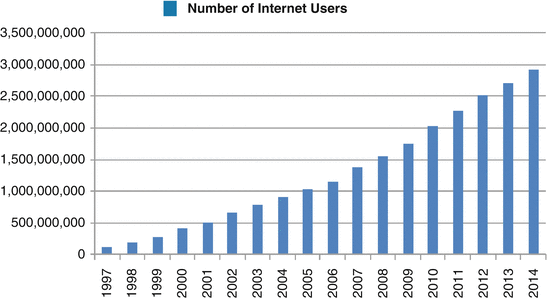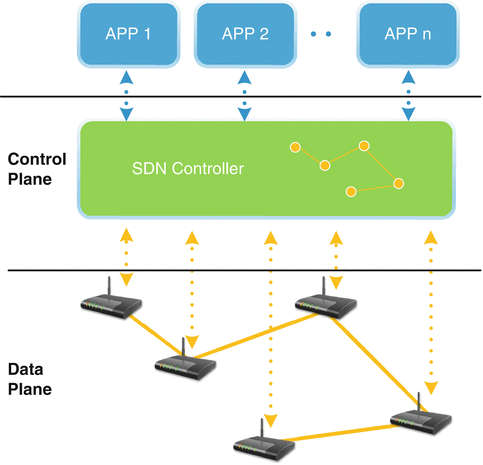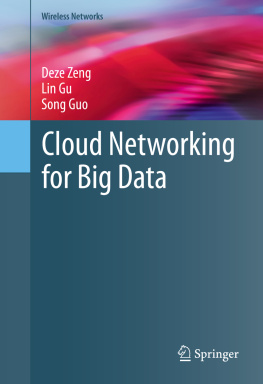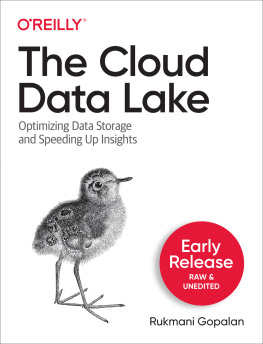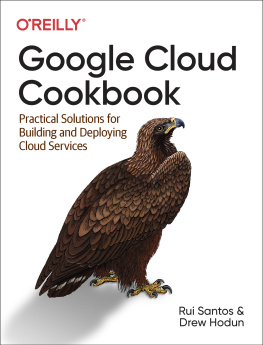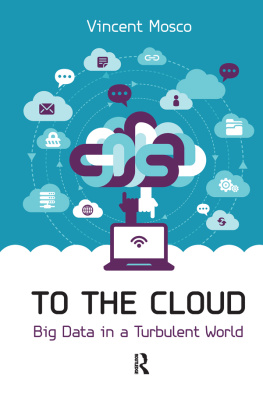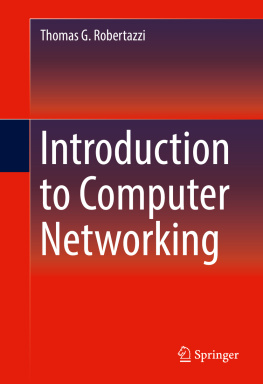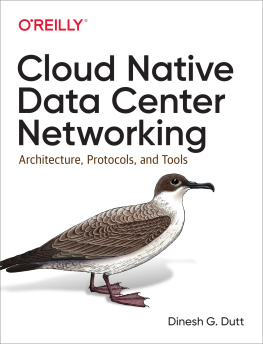Like any other technology, cloud networking is a natural evolution due to the technology development and requirement stimulation. In this chapter, let us first briefly review the networking history to understand how it evolves to cloud networking. We then introduce cloud computing and big data as its enabling technology and driving force, respectively.
1.1 Networking Evolution
Computer networking traces its beginnings back to 1960s. It is widely agreed that todays global Internet started from the Advanced Research Projects Agency Network (ARPANet) of the U.S. Department of Defense in 1969, based on the concept published in 1967. Initially, it has only 4 official nodes at UCLA (University of California, Los Angeles), Standford Research Institute (SRI), UCSB (University of California, Santa Barbara), and the University of Utah. The initial purpose of ARPANet was to share computer resources among scientists in these four connected institutions. The concept of packet as information transmission unit that is able to be routed on different paths and reconstructed at the intended destination was invented then. Accordingly, Network Control Program (NCP) [] was introduced as a symmetric computer-to-computer networking protocol for network participation, data flow routing, host addressing. Thanks to NCP, the worlds first node-to-node message was successful sent from UCLA to SRI and more nodes were able to join the network. The number of hosts was increased to 15 in 1971. ARPANet even become international in 1973 with the involvement of the University of London and Norways Royal Radar Establishment.
In 1970s, the construction of ARPANet stimulated the development of many new networking technologies. For example, in 1974, Ethernet allowing intra-connection within Xerox company (i.e., local area networks) was created and demonstrated by Robert Metcalfe and David Boggs, who were therefore listed as Ethernet inventors in the patent application. In the same year, Vinton Cerf and Robert Kahn, who later were recognized as the fathers of the Internet, published A Protocol for Packet Network Interconnection []. With the adoption of Ethernet and TCP/IP protocol, data transmission in network became more quickly and efficiently. The network size also increased. It was reported that the total number of connected computers in ARPANet increased to 1000 by 1984. With the development and incorporation of personal computer (PC), the total number of network hosts broke 10,000 by 1987 and the number was suddenly ten timed to reach 100,000 by 1989.
In contrary to the openness of TCP/IP, the government funded background made ARPANet only available to authorized enterprises and research agencies. Individual unauthorized users were excluded from ARPANet. This more or less constrained the development and popularity of ARPANet. To deal with the ever-growing demands for public data communication services, a wide-area network, National Science Foundation Network (NSFNet), replaced ARPANet as the backbone network for connecting universities and research facilities in 1991 and finally developed into a major part of the Internet backbone. The year of 1991 is also regarded as the flag year of World Wide Web (WWW) as Tim Berners-Lee developed and released it in this year. WWW is an information system of interlinked hypertext documents that are accessible through the Internet. Since then, the development of Internet and WWW was ignited. In 1994, the WWW burst all over the world with an annual growth of 341,634% []. The success of WWW also drove the development of Internet as the latter performs as the communication backbone to support the former.
Todays Internet is populated with several billions of hosts worldwide. According to a recent survey, around 40% of the world population enjoy the Internet connection in 2013 while the number was less than 1% in 1995 [ shows the growth of global Internet users since 1993. We can see that the number of Internet users has increased more than tenfold since 1993 by 2014.
Fig. 1.1
Number of Internet users
What is astonishing is that the TCP/IP protocol suite initially designed for only few connected devices still functions well in todays large-scale Internet. This is attributed to the simpleness, distribution, and blackbox design principles of TCP/IP. Simpleness means that the protocol suite only provides the functions of transmitting and routing between hosts while all other intelligences are put in the hosts. Distribution indicates that there is no central network administration or control. The whole network operates in a distributive, self-learning, and self-management manner. Blackbox design principle refers to that the internal changes and operations are standardized and invisible. Programmers do not need to concern the details in the underlying network behaviors. But in this case, programmers also do not have the privilege to control the network even if there are such demands.
The success of Internet practically proves that TCP/IP is really a brilliant design. However, with the recent development of information and communication technologies, the limitations and shortcomings of this general one-fit-all TCP/IP solution are increasingly exposed. Different applications may have different demands and highly dynamic communication, consequently requiring different networking resources. Current network devices lack the flexibility to deal with different application needs because of the underlying hardwired implementation of routing rules [).
In contrast to the distributed management of traditional network architecture, SDN provides a centralized management and controlling of network services through an abstraction of the hardware-level functionalities via decoupling data plane from control plane. By such means, it is able to control the behaviors of entire network through a software program, enabling network administrators to build highly scalable, flexible, and adaptive networks, according to the data transmission needs. Data plane is mainly in charge of the data flow delivery between communication end hosts while control plane refers to the logical controller integrated with both network and service controller components responsible for network and service management. Control plane also provides APIs to allow application developers and network administrators to easily customize the network (e.g., routing rule, flow priority settings, topology control, etc.) and manage the services (e.g., service replica creation, load balancing, etc.). Programmers do not need to replace or reprogram hardware components in the core network. To achieve such vision, OpenFlow is proposed as a standardized protocol with strong industry support to ensure the secure and effective communication between control plane and data plane. The importance of SDN also urged the establishment of Open Networking Foundation (ONF) [] in 2011 as a non-profit industry consortium to promote and standardize SDN and OpenFlow.
